This month brings Purim, our festival of costumes and masks and merriment. (Join us for An Encanto Purim on March 16 — there are details in our March newsletter!)
When my son was little, he used to confuse the names Yom Kippur and Purim. One year he was very excited to wear a costume to Yom Kippur… until I regretfully informed him that Yom Kippur was not the costumes and silliness holiday!
He didn’t know it, but he was following in the footsteps of our sages. Tradition creatively misreads the name Yom Kippurim (Day of Atonements) into Yom K’Purim (a Day Like Purim). It’s an aural pun, because both names contain the syllable “pur.” In the name of our spring festival, “purim” are the lots that the evil Haman cast to determine the date of our people’s putative destruction. In the name of our fall festival, “pur” comes from the root of the word “kapparah,” atonement.
In this piece of wordplay, our tradition connects two days that might seem to be the most disparate celebrations in our year.
On Yom Kippur we wear white, we fast from food and drink, and we engage in repentance and introspection, “answering our souls” and looking at who we’ve been and who we want to be. On Purim we wear costumes, we eat and drink and make merry, we send gifts of food (mishloach manot) to others, we retell the raucous and over-the-top story of Esther and Haman and Mordechai. What on earth could these two days have in common?
One answer is the idea of casting lots (or drawing straws or rolling dice) — the sense that things can change in an instant, and everything might hinge on a seemingly random choice. In the Purim story, of course, Haman casts lots to determine our fate. And traditionally on Yom Kippur we read about the high priest drawing lots to determine which goat will be sent into the wilderness and which will be sacrificed to God.
Both Yom Kippur and Purim remind us that every status quo may turn out to be fragile — that the world might change on a dime.
In recent days I’ve spoken with many of you about Russia’s attack on Ukraine, and about the feelings evoked in many of us by this realization that there is war in Europe again. What can we do in the face of such uncertainty? What can we rely on when life seems random?
I think these two festivals, taken together, give us an answer. Yom Kippur invites us to respond to life’s seeming randomness with spiritual practice, answering to our souls, confessing our mis-steps and trying to be better. And Purim invites us to respond to life’s seeming randomness by cultivating joy, sharing our abundance with others, and using our human agency to create change, especially when God’s presence may seem hidden. (Like in the story of Esther, where God’s name is never mentioned — though our mystics find divine Presence permeating the narrative.)
Solemn spiritual practice, and raucous joy. Turning our lives around, and using our agency to protect the vulnerable. Confessing where we’ve screwed up, and sharing our abundance with others. The two approaches to life’s uncertainty epitomized in these two festivals balance each other, and they can balance us, too. No matter how life’s kaleidoscope turns, these two approaches can help us find (or make) meaning in how the pieces fall.
Blessings to all for a meaningful Purim,
— Rabbi Rachel





